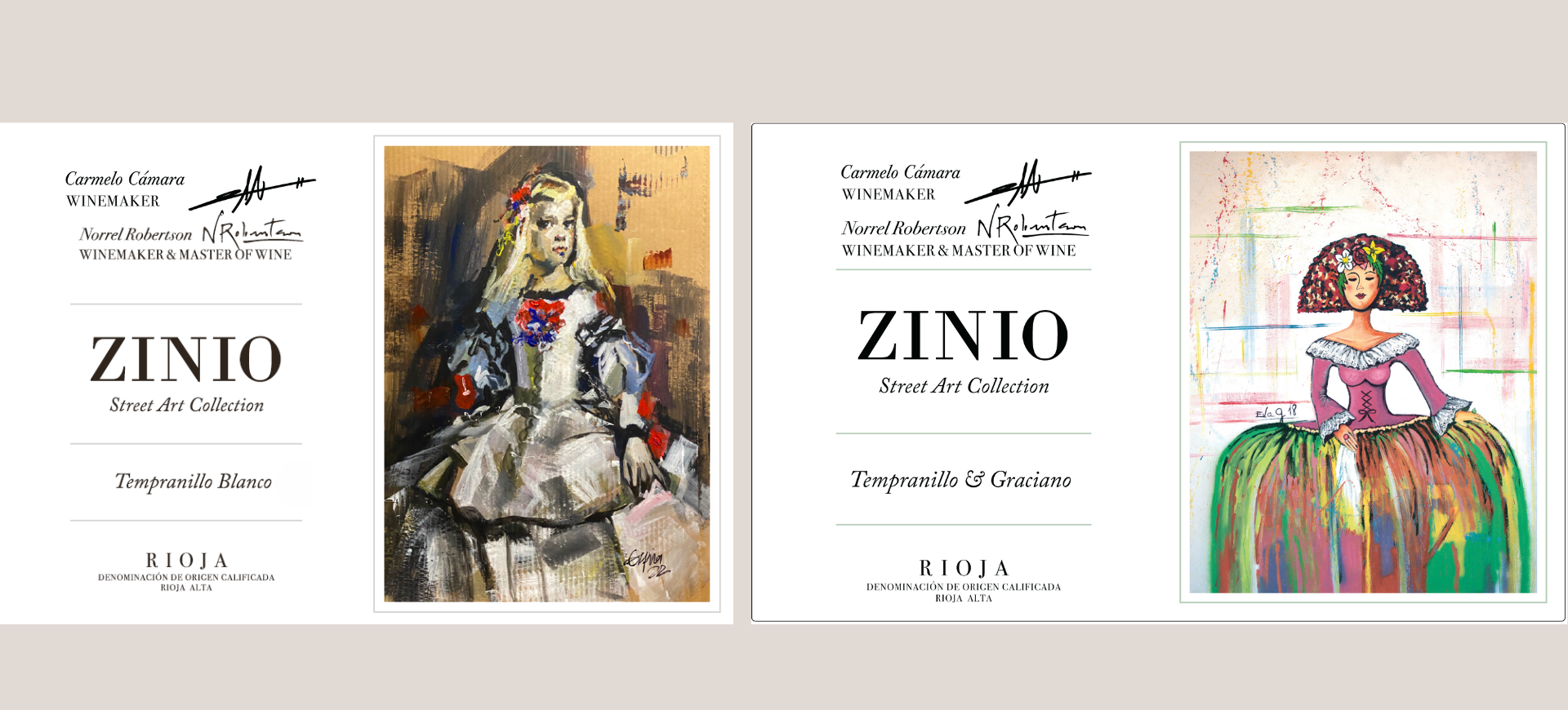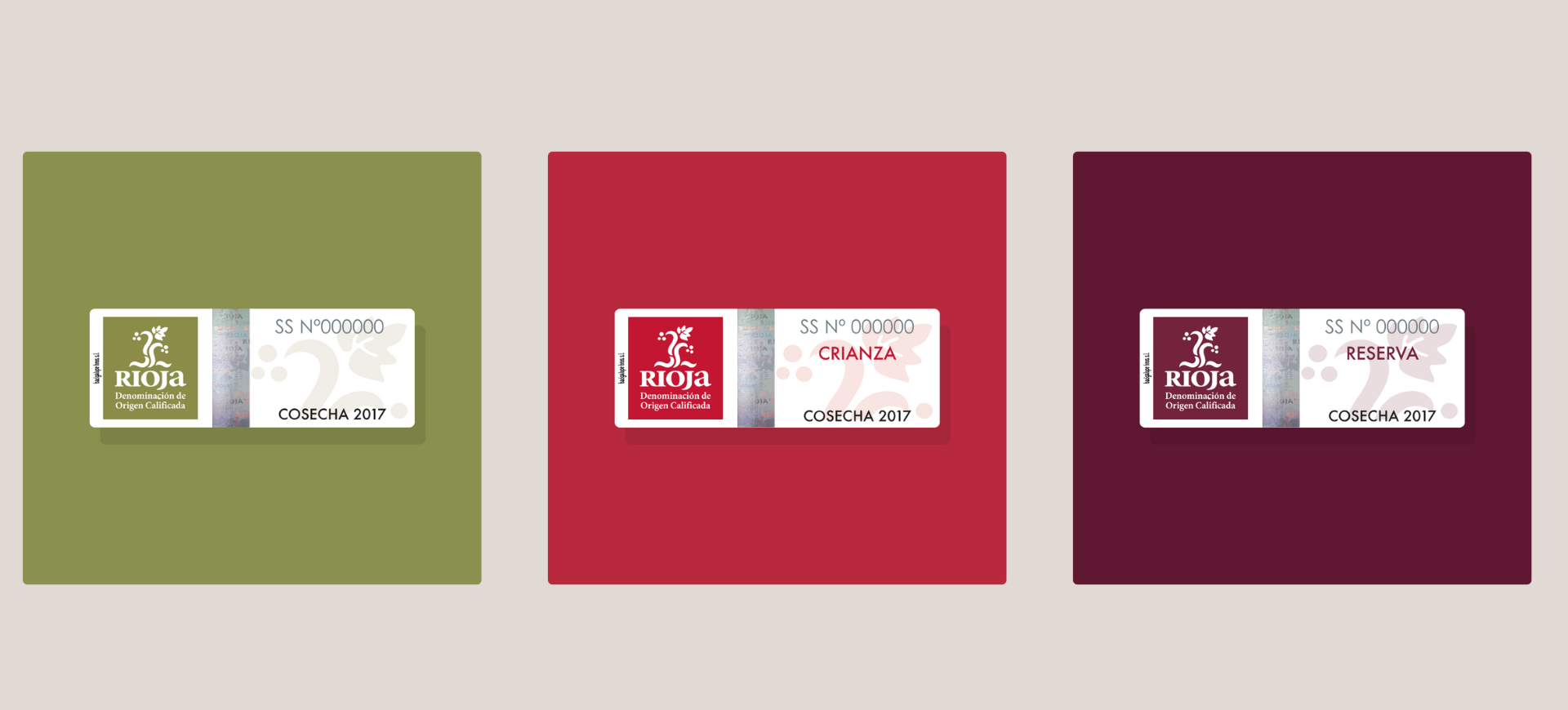The Secrets of the Label
When you’re standing in front of a bottle of wine, the label is the first clue about what awaits you in the glass. But beyond being a simple decorative element, a wine label is a key source of information about its origin, variety, aging process, and sensory characteristics. At Bodegas Zinio, we make sure that every detail on our wine labels serves as a helpful guide for those looking to fully enjoy each bottle.
In this blog, we will explore how to effectively read a wine label, so you can make informed decisions and enjoy the authentic winemaking experience of Rioja. Discover what terms like Joven, Crianza, and Reserva mean, and how to understand the grape variety and aging process you’ll find on each bottle of Bodegas Zinio.
1. The Winery Name and the Denomination of Origin: Zinio’s Identity
The first thing you will notice on the label is the name of the winery, and at Bodegas Zinio, we are proud of the history we have in Rioja. Our name is synonymous with quality, tradition, and dedication to winemaking. Every bottle that carries the name Zinio represents the work and passion of generations of winemakers.
On the label, you will also find the Denomination of Origin Qualified Rioja (DOCa Rioja) seal. This mark guarantees that the wine comes from the Rioja wine region, world-renowned for the quality of its wines. The DOCa Rioja is a way of ensuring that the wine you are purchasing meets the highest standards of the region, and even more so considering that our wines belong to the subzone of Rioja Alta, a reference for centuries of quality and ancient vineyards.

2. Grape Varieties: The Heart of Zinio’s Wine
The next key element on the label is the grape variety. The grape is the foundation of any wine, and each variety has its own characteristics that impact the taste and complexity of the wine. At Bodegas Zinio, we select native and traditional varieties that are perfect for the terroir of Rioja.
Red Varieties:
-
-
Tempranillo: This is the most representative grape of Rioja and our wines. Tempranillo offers a robust structure with flavors of red fruits and a spicy touch. Depending on the aging process, Tempranillo wines can be fresh and young or more complex and mature.
-
Garnacha: Known for producing fruity, fresh, and vibrant wines with aromas of red fruits like strawberry and cherry. It yields light wines with a smooth structure, perfect for those seeking an easy-to-drink wine full of personality.
-
Graciano: While less known, Graciano is essential in Rioja blends. With high acidity and a high concentration of floral and spicy aromas, it adds complexity, freshness, and longevity to wines, making it a crucial component for aging and maturation.
-
White Varieties:
-
-
Viura: The most traditional white variety of the region. Viura wines are fresh and aromatic, with fruity notes of apple, pear, and floral hints. Perfect for those seeking a light, easy-to-drink wine.
-
Tempranillo Blanco: A modern variety derived from red Tempranillo. It has a more tropical profile, with aromas of exotic fruits and refreshing acidity. Ideal for those seeking a different experience in white wines.
-
3. Harvest Year: The Climate and Its Impact on Flavor
The harvest year is another key piece of information you’ll find on the label. This indicates the year the grapes were harvested, and the climate of that year can deeply affect the wine’s characteristics. A warm year typically produces wines with more concentration and body, while a cooler year results in lighter, fresher wines.
At Bodegas Zinio, our harvests reflect the meticulous work in the vineyard to ensure that each bottle offers the best of the year. If you are a fan of wines with more structure, we recommend exploring warmer vintages, while cooler years may be the perfect choice for those who prefer fresher wines.
4. The Type of Wine: Joven, Crianza, and Reserva
A fundamental aspect of the label is the type of wine, which indicates whether it’s Joven, Crianza, or Reserva. This refers to the amount of time the wine has spent in oak barrels and in the bottle, which directly influences its complexity and flavor.
-
-
Joven: Joven wines do not undergo barrel aging or have a minimum aging period. They are fresh, fruity, and light, ideal for those looking for a direct, easy-to-drink wine that is expressive of the grape variety.
-
Crianza: Crianza wines spend at least 12 months in oak barrels and then additional time in the bottle. This gives them greater complexity, with spicy and woody notes, blending the fruit flavors with those of the wood.
-
Reserva: Reserva wines have a more extended aging process, with at least three years of aging, of which one must be in barrel. These wines are more complex and have superior aging potential, with more mature and elegant notes.
-

5. Alcohol Content and Tasting Notes
Some labels will also include the alcohol percentage, which is an indicator of the wine’s strength. At Bodegas Zinio, our wines generally range between 12% and 14% alcohol, providing the perfect balance of intensity and smoothness.
Additionally, some labels include tasting notes, which give you an idea of the wine’s aromas and flavors. Words like “red fruits”, “spices”, “woody hints”, or “floral” help you anticipate the sensory experience that awaits you in the glass.
Conclusion: Every Label Tells a Story
A wine label is much more than just a decoration; it is a crucial informational tool that provides everything you need to know to choose the perfect wine. At Bodegas Zinio, every label is designed with the goal of reflecting not only the product inside but also the effort, dedication, and tradition of our winery. From the winery name, grape variety, to the aging process and harvest year, every element on the label guides you in your selection, ensuring you get the most out of your wine experience.
By understanding what the label says, you are not just choosing a wine; you are selecting a unique experience full of history and flavor, straight from the vineyards of Rioja.
To learn more about the world of wine, the Rioja DOCa, and our winery, don’t hesitate to visit our blog every Thursday and follow us on social media: @ziniobodegas.